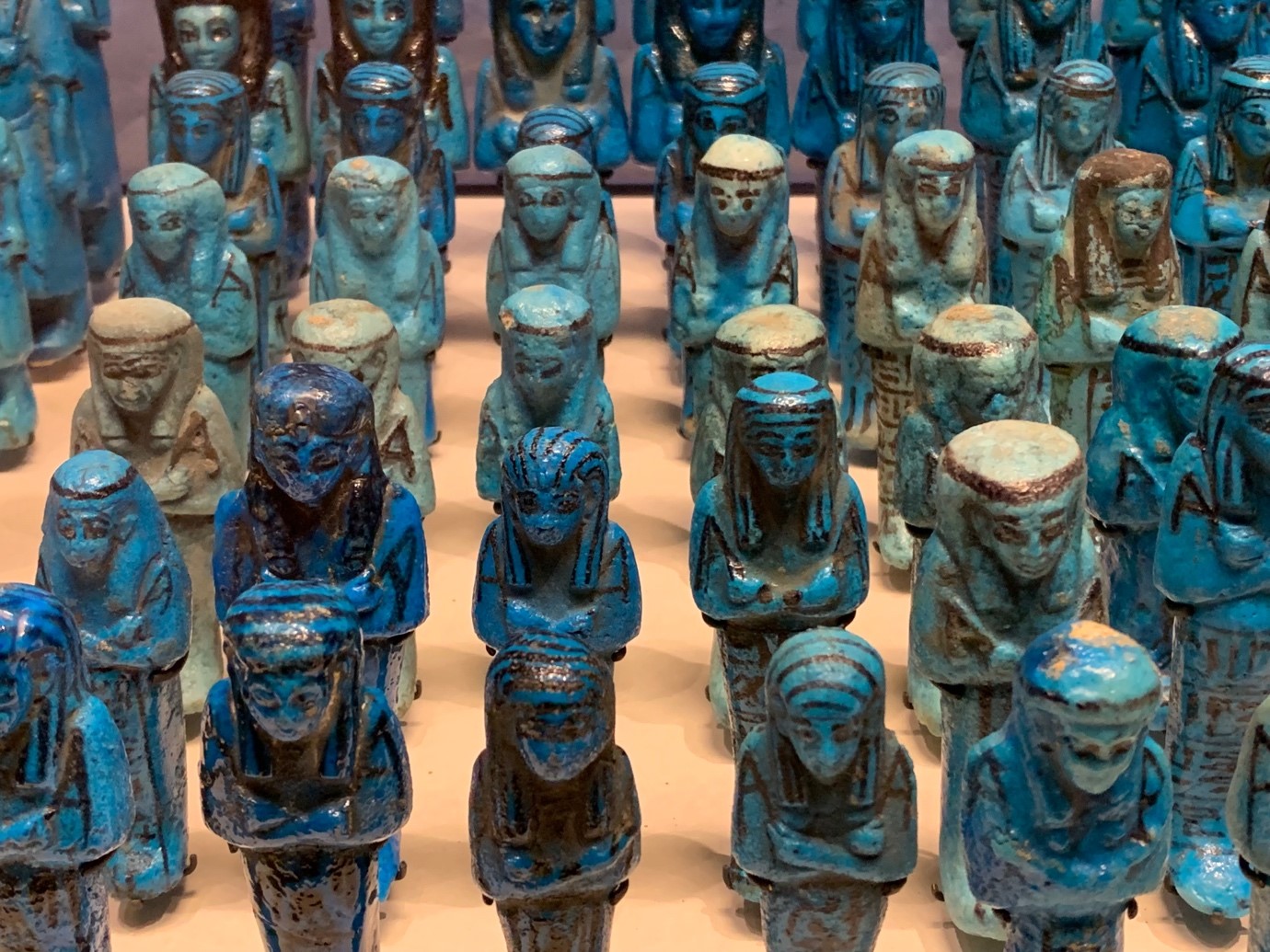

The Blue Servants
My Louvre by Antoine Compagnon

The Blue Servants
The Louvre has unique works, including its “top ten” or its “fifteen highlights,” as the guides say, but it also has many series: series of Greek kraters, Etruscan amphoras, Roman earrings, Egyptian eyes. Today, I stop in front of this series of servants, a troupe of blue-faience figures that accompanied a sovereign in his Theban tomb in the second millennium BCE (Sully, room 319, E 22126). There they are, standing in serried ranks for all eternity, with the foremen at the end of the rows. Of course, they remind me of the immense clay army buried with the first Emperor of China and discovered not so long ago in a field in Xi’an, and that I saw a few years ago. Clay soldiers, faience servants—that’s better than the custom that required men to be buried alive beside their king. What child wouldn’t want a handful of these little blue servants?